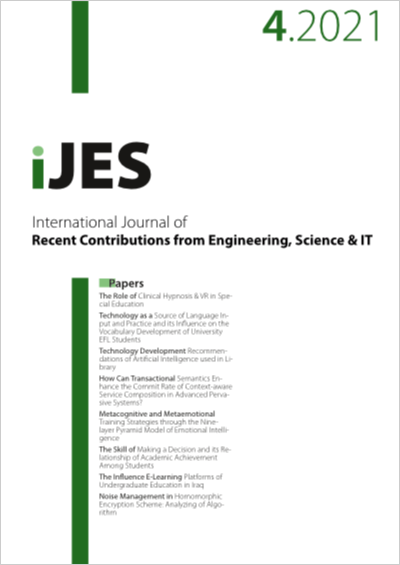How Can Transactional Semantics Enhance the Commit Rate of Context-aware Service Composition in Advanced Pervasive Systems?
DOI:
https://doi.org/10.3991/ijes.v9i4.25919Keywords:
Context-awareness, Transactional Service, Behavioral Adaptation, Profiled Task Class, Adaptation Mechanism, Service CompositionAbstract
Context-aware composition of services exhibiting transactional properties poses several challenges. A major challenge is the transactional behavior of candidate services which is subject to perpetual change while the composition is running. Compositions of services displaying transactional properties must be dynamically adapted at run time to cope with context fluctuations. By dynamic adaptation, we refer to the ability to alter the composition behavior in response to changes affecting its execution. We focus on changes impacting the successful commit rate of transactional service composition. This has led us to explore the trail of a flexible homeomorphism between alternative behaviors. We propose a behavioral adaptation approach that adjusts the behavior of transactional compositions of services in a proactive and transparent manner. This strategy is based on the Profiled Task Class concept. A service composition generator has also been developed for the performance evaluation of components implementing the behavioral adaptation strategy in order to identify its impact on the commit rate of CATS compositions.
Downloads
Published
How to Cite
Issue
Section
License
Copyright (c) 2021 Widad Ettazi, Hatim Hafiddi, Mahmoud Nassar

This work is licensed under a Creative Commons Attribution 4.0 International License.
The submitting author warrants that the submission is original and that she/he is the author of the submission together with the named co-authors; to the extend the submission incorporates text passages, figures, data or other material from the work of others, the submitting author has obtained any necessary permission.
Articles in this journal are published under the Creative Commons Attribution Licence (CC-BY What does this mean?). This is to get more legal certainty about what readers can do with published articles, and thus a wider dissemination and archiving, which in turn makes publishing with this journal more valuable for you, the authors.
By submitting an article the author grants to this journal the non-exclusive right to publish it. The author retains the copyright and the publishing rights for his article without any restrictions.
This journal has been awarded the SPARC Europe Seal for Open Access Journals (What's this?)


